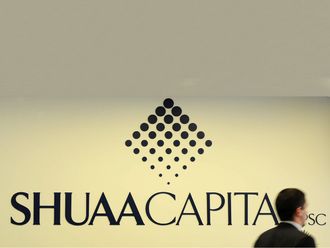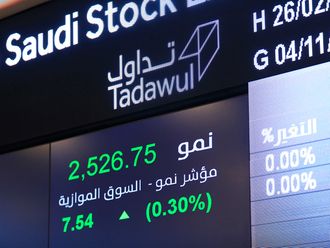
Dubai: At 1,959.9 tonnes, worldwide demand for gold has slipped to its weakest first-half performance since 2009, with the dip jewellery sales in India and the Middle East being one of the reasons. In the UAE specifically, gold and jewellery sales in the first six months weighed in with 18.9 tonnes, but down from the 25.3 tonnes recorded same time last year, according to the latest World Gold Council numbers.
What the H1-18 numbers reveal is that UAE consumers are still adjusting to the VAT factor on gold retail pricing. “There was also their sentiments on the economy, plus there was the subdued tourist buying for much of this period,” said John Mulligan, Head of Member and Market Relations at the London-based WGC. “For (the trade in) Dubai, there is the added challenge of gold buying happening elsewhere in the region.” (At Thursday’s opening, 22k gold was quoted at Dh138.75 in Dubai.) Even the pickup in buying last month — after gold prices dropped to a one-year low — has been more or less subdued, local market sources say. “The increase is very marginal and not something that we can talk about (as a full-scale recovery in buying habits),” said Anil Dhanak, Managing Director at Kanz Jewels. The retailer said it will continue to focus on the big-ticket purchases — of the Dh15,000 and over kind — to see through the soft period.
Meanwhile, Saudi Arabia saw 18 tonnes of gold and jewellery changing hands in H1-18, but is seeing the impact from the transition to full-scale localisation of staff at jewellery stores, Mulligan said. Iran saw a bit of activity, accounting for 17.3 tonnes, with shoppers putting faith in the metal for its safe haven status.
But Indian consumers kept their distance compared to recent years, taking in only 267.1 tonnes against the 284.7 tonnes in H1-17. “With the dollar’s strength, gold demand certainly felt the impact of higher local currency prices,” said Mulligan. “To some extent, it was the case in India and even in Turkey.”
To compensate for the dips in India and the Middle East, Chinese buyers did their bit, taking in 359.9 tonnes and quite a bit of gain on the 337.2 tonnes of jewellery they amassed in H1-17. According to Mulligan, China’s jewellery retailers seem to be overcoming the challenges — including shifts in generational preferences — the sector had been facing during 2016-17.
The US consumer also pulled his or her weight, with jewellery demand up 5 per cent. In fact, the growth in the economy and the general feel-good factor around it had Q2-18 demand in the US hitting a 10-year high.
But on the downside, it was institutional investors and bullion funds in the US who were keeping away from bullion during this period and led to the overall decline in global H1-18 offtake.
“Holdings of North American-listed (exchange traded) funds fell by 30.6 tonnes as investors focused on domestic economic strength,” the WGC report notes. Overall ETF “inflows were down 46 per cent year-on-year.” (But European funds did manage to soften some of the demand dip, picking up bullion exposure “due to uncertainty stemming from Italian elections and monetary policy outlook”.
For gold buyers, whether individual or institutional, the coming weeks will be fixated on how the dollar continues to fare and whether trade-related tensions play havoc on emerging market currencies.
Alistair Hewitt, Head of Market Intelligence at the World Gold Council, said in a statement, “ “It’s interesting how investors around the world have reacted to some of the risks stalking financial markets. Weaker economic prospects and tumbling currencies off the back of heightened tensions with the US boosted Chinese and Iranian gold demand, while US investors shrugged off any geopolitical concerns.”
VAT removal in wholesale pays off
There is a restoration of confidence within the UAE’s gold wholesale trade after the government decided to pull back the 5 per cent on all such transactions.
“The additional investment of 5 per cent upfront VAT payment has also been removed, so jewellers can have more stocks with their liquidity,” said Chandu Siroya, Managing Director at Siroya Jewellers. “The trade would urge the Federal Tax Authority to reconsider VAT on retail sales also to be charged, to the value added (component of jewellery).
“The main buyers of jewellery in the UAE are expatriates or tourists. The additional cost of 5% VAT has made us more expensive than many countries from the Indian Subcontinent. We are slowly losing those customers who used to buy jewellery because of the price differential. I do hope once the VAT refund for tourists is in place we will be able to convince the authorities to look at the issue favourably.”











